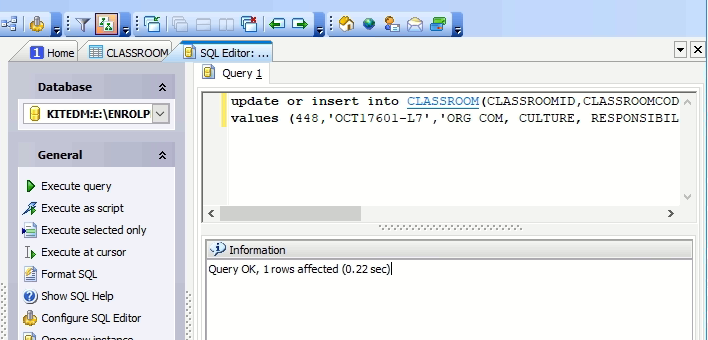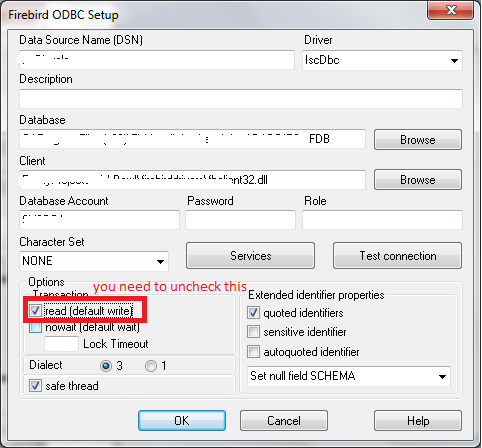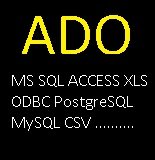Leaderboard
Popular Content
Showing content with the highest reputation on 02/27/2018 in all areas
-
It should be possible with this information. https://blogs.windows.com/msedgedev/2015/08/27/creating-your-own-browser-with-html-and-javascript/2 points
-

captcha image\ image recognition
dadalt95 reacted to JLogan3o13 for a topic
@dadalt95 you seem not to have bothered to read the forum rules during your time here. I suggest you do so now before posting again, and you will see why this thread is locked.1 point -

How to embed explorer.exe in autoit GUI?
Earthshine reacted to JLogan3o13 for a topic
Not sure why no one seems able to read this banner at the top of the DEV forum: Moved to the appropriate forum.1 point -
Hello adelbak, I need to ask you a question: Are you intending to increment twice the "i" variable in the for loop ? the first for statement initialize i to 0 and j to 0 and an the end of the for loop, I can see is i++, which means, you are incrementing "i" by 1 and also, the for loop when it reaches the close brace "}" will also check for the condition if "i" still less than 15 , if that ok, also increment "i" again. So you are incrementing "i" twice . Also, I can see that you are incrementing "j" at the same time. My question is : Are you intentionally incrementing "i" twice ? if yes, then last "i++" should be removed and then the for loop at the beginning should be like this if I understood your code correctly: int i=0, j=0; //for (i=0, j=0; i < 15; i++, j++) for (; i < 15;) { if (inp_imei[i] < '0' || inp_imei[i] > '9') { return 1; } out_imei[j] = (inp_imei[i] - '0'); if (i >= 14) break; if (inp_imei[i+1] < '0' || inp_imei[i+1] > '9') { return 1; } out_imei[j] += ((inp_imei[i+1] - '0') << 4); out_imei[j] = out_imei[j] ^ out_mask[j]; //i++; i+=2; j++; } is that what you intended ? to increment "i" twice ? and "j" will be always incremented to 1 ?1 point
-

Return Position of RegEx in String
adityaparakh reacted to jguinch for a topic
;~ 1.SamanthaRichardson - Find this pattern ie twoCaps in single word ;~ Insert space before second Capital letter. $sIutputstring = "SamanthaRichardson" $sOutputstring = StringRegExpReplace($sIutputstring, "\w\K(?=[[:upper:]])", " ") ConsoleWrite($sIutputstring & " => " & $sOutputstring & @CRLF) ;~ 2.dson407 - word continued by numbers without space ;~ Insert space before Number $sIutputstring = "dson407" $sOutputstring = StringRegExpReplace($sIutputstring, "[A-Za-z]\K(?=\d)", " ") ConsoleWrite($sIutputstring & " => " & $sOutputstring & @CRLF) ;~ 3.cer"S - No space before doubleQuote ;~ Insert space before doubleQuote $sIutputstring = "cer""S" $sOutputstring = StringRegExpReplace($sIutputstring, "[A-Za-z]\K(?="")", " ") ConsoleWrite($sIutputstring & " => " & $sOutputstring & @CRLF) ;~ 4.ple.comBu - letters after .com ;~ Insert space after .com $sIutputstring = "ple.comBu" $sOutputstring = StringRegExpReplace($sIutputstring, "[A-Za-z]\K(?=\.com)", " ") ConsoleWrite($sIutputstring & " => " & $sOutputstring & @CRLF)1 point -
1 point
-
Version 2.0.0
1,236 downloads
On one/multiple big sheet(s) you get users (columns) and groups (rows). The list is sorted descending by number of members so you get the users with most groups and the groups with most members on top of the page. You can filter by (multiple) samaccountname(s), department or you can create your own LDAP query filter. You can filter the resulting list of groups using a Regular Expression. Version 2.0 uses maps so at the moment it requires the latest beta version of AutoIt! BTW: If you like this tool please click the "I like this" button. This tells me where to next put my development effort1 point -

windows hacks
Draygoes reacted to JLogan3o13 for a topic
How many times do we need to go over this before people get it? If a Mod steps into a thread with an obvious attempt to determine legitimacy, stay out of it until the all-clear. Don't guess at what you think the OP meant, don't offer witty comments, don't offer to help, just use some common sense and wait.1 point -
I have been working with this ADO.AU3 UDF for more than a year. At the time of writing this, I am using beta 2.1.15. ADO in general allows connection to various data sources. The full documentation is available from Microsoft and a simple Google search will reveal the scope. This ADO UDF is very powerful and incorporates ideas from various other UDFs available on the Forums, such as the SQL UDF and others. The ADO UDF provides for an ADO connection using COM objects. The design is such that little knowledge of either ADO or COM is required. Combining ADO with AutoIt creates a very powerful package. The way this UDF is implemented it is not necessary to have deep ADO knowledge in order to connect and perform tasks. Since it uses ADO, in order to implement, the following is required a data source (such as a database) ODBC DNS driver and entry in the Windows Control Panel this ADO UDF #include of ADO.au3 in the user script Note that the examples should work by default. Note the connection values in each example. I have personally tested the ADO UDF on PostgreSQL databases, both locally and online, DBFs both locally and remote and briefly tested connectivity to other data sources. It all works as expected. I do not use the power of ADO to the full extent, as my needs are limited to basic reporting. The advantage is that standard SQL queries can be run over ADO to the data source - even to DBF files! The most important changes in this version 2.1.15 beta are as described below. The COM error handling makes provision for standard SQL blank result sets. This means that COM errors such as no-connection, faulty queries etc will result in a crash. Valid SQL with valid SQL responses can be processed in a manner which does not lead to a crash, but processed as a normal result. At the same time, a different implementation of the same UDF (this means you write your own part of the AutoIt code differently) means that such a blank result set may represent a blank ADO cursor, which must result in an ADO / COM error. The advantage is that a single UDF can now be implemented in different scenario's, on various data sources, with different error handling processes. I recommend this ADO.AU3 UDF to anyone wishing to connect to any external data source. Skysnake1 point
-

FF.au3 (v0.6.0.1b-15) [End of life]
NareshPema reacted to Danp2 for a topic
From the online help -- So, you'll need to use _FFObj, like this -- MsgBox(0, "_FFCmd('outerHTML'", _FFObj($sObject, 'outerHTML'))1 point









